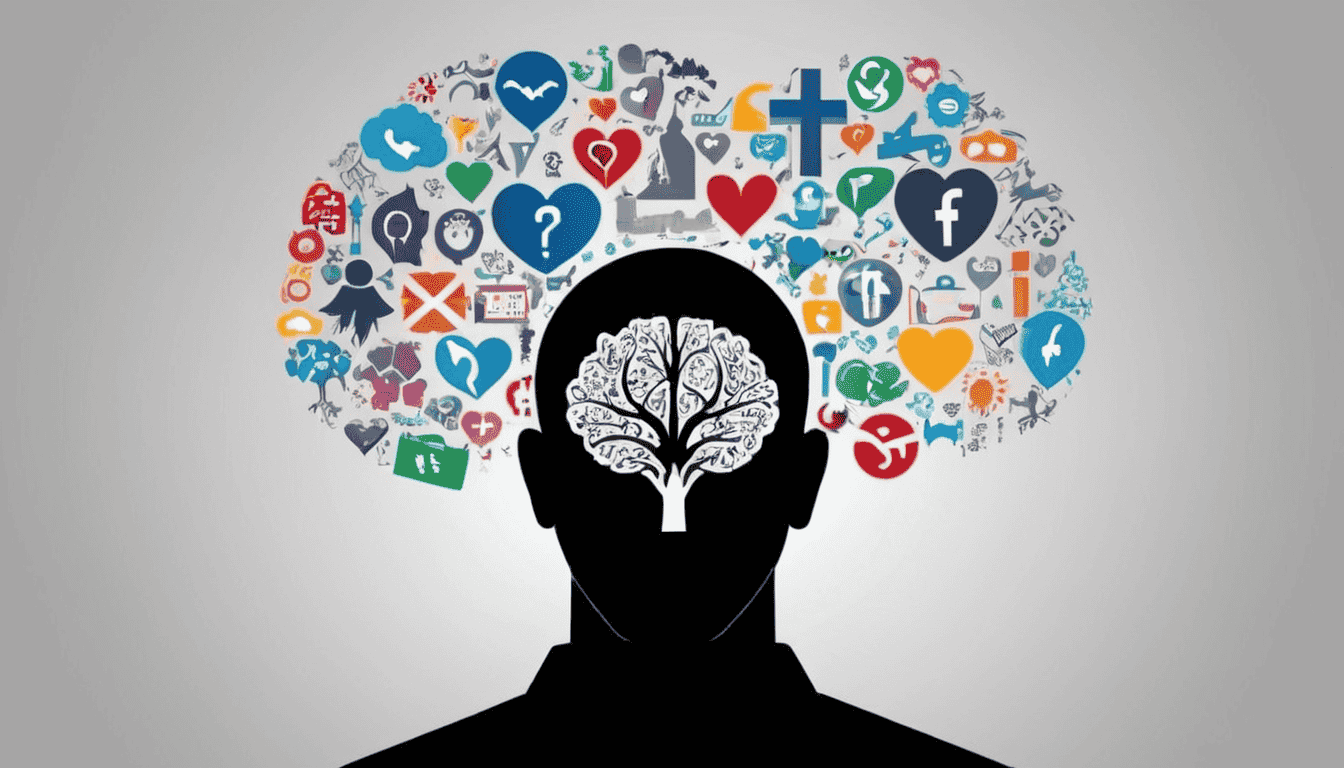Top Economic Indicators to Watch
Emily Willis

Photo: Top Economic Indicators to Watch
Decoding the Economy: Your Essential Guide to Top Economic Indicators
The economy often feels like a complex, abstract entity, a realm reserved for financial experts and policymakers. Yet, its pulse directly influences our daily lives – from the price of groceries and the availability of jobs to the interest rates on our mortgages and savings. Understanding the key economic indicators is not about becoming an economist; it's about gaining valuable insights into the forces shaping your financial world. These crucial data points act as vital signs, offering a glimpse into the overall health and future direction of a nation's economy.
This comprehensive guide will demystify the most important economic indicators, explaining what they are, why they matter, and how you can interpret them to make more informed personal and financial decisions. By the end, you'll be better equipped to navigate the economic landscape with confidence.
What Are Economic Indicators?
Economic indicators are statistical data points that reflect the condition, performance, or momentum of an economy. They are essentially reports and measurements, usually released by government agencies or reputable organizations, that provide snapshots of various economic activities. These indicators are categorized into three main types based on their relationship to economic cycles:
- Leading Indicators: These change before the economy shifts, offering clues about future economic activity. Examples include consumer confidence and housing starts.
- Coincident Indicators: These move simultaneously with the economy, reflecting its current state. Gross Domestic Product (GDP) and retail sales are common coincident indicators.
- Lagging Indicators: These change after the economy has already begun to shift, confirming a trend that is already in motion. The unemployment rate and inflation are often considered lagging indicators.
By tracking a combination of these indicators, analysts and individuals alike can build a more complete picture of economic health and anticipate potential changes.
Key Economic Indicators You Should Watch
Let's dive into the specific economic indicators that routinely capture headlines and hold significant sway over economic forecasts and personal finance.
Gross Domestic Product (GDP)
What it is: Gross Domestic Product (GDP) is arguably the most fundamental measure of a country's economic health. It represents the total monetary value of all final goods and services produced within a country's borders over a specific period, typically a quarter or a year. Think of it as the grand total of everything an economy produces.
Why it matters: GDP is a powerful gauge of economic growth and overall output. A consistently growing GDP generally signals a healthy, expanding economy, often leading to more job opportunities and higher income levels. Conversely, a prolonged slowdown or decline in GDP growth can be a cause for concern, potentially signaling an economic downturn or recession. A common rule of thumb is that two consecutive quarters of declining GDP indicate a recession.
How it impacts you:
- Job Market: Strong GDP growth often translates to a robust job market, with businesses expanding and hiring more.
- Investment Opportunities: A growing GDP can boost stock market performance, influencing investment returns.
- Overall Well-being: Falling GDP can lead to lower incomes, reduced spending, and job cuts, impacting quality of life.
Inflation (Consumer Price Index - CPI)
What it is: Inflation refers to the rate at which the general level of prices for goods and services is rising, consequently eroding purchasing power. The most widely cited measure of inflation is the Consumer Price Index (CPI), which tracks the average change over time in the prices paid by urban consumers for a "basket" of consumer goods and services.
Why it matters: Inflation directly affects the cost of living and the value of your money. A moderate and stable inflation rate (often around 2-3%) is generally considered healthy for an economy, encouraging spending and investment. However, high or runaway inflation can significantly reduce the purchasing power of your savings and make everyday necessities more expensive.
How it impacts you:
- Purchasing Power: High inflation means your money buys less than it did before, making budgeting and spending adjustments necessary.
- Savings and Investments: Inflation erodes the real value of savings. To maintain and grow wealth, investments need to outpace the inflation rate.
- Interest Rates: Central banks often raise interest rates to combat high inflation, making borrowing more expensive.
Unemployment Rate
What it is: The unemployment rate measures the percentage of the total labor force that is jobless but actively seeking employment. It's a critical indicator of labor market health.
Why it matters: A low unemployment rate generally indicates a strong economy where businesses are thriving and hiring. This often leads to increased wage growth as employers compete for workers. Conversely, a high unemployment rate signals economic distress, affecting job security, consumer spending, and overall economic stability.
How it impacts you:
- Job Security and Opportunities: A low unemployment rate provides greater job security and more opportunities for career advancement.
- Wage Growth: When unemployment is low, your chances of receiving a raise or finding a better-paying job generally increase.
- Consumer Spending: High unemployment reduces consumer spending, which can negatively affect businesses and GDP.
Interest Rates
What it is: Interest rates, typically influenced by a country's central bank (like the Federal Reserve in the U.S.), represent the cost of borrowing money or the return on savings. The Federal Funds Rate, set by the Federal Reserve, influences other interest rates throughout the economy.
Why it matters: Interest rates are a powerful tool for central banks to manage economic growth and inflation. Lower interest rates encourage borrowing and spending, stimulating economic activity. Higher rates, on the other hand, discourage borrowing and can slow down an overheated economy or combat inflation.
How it impacts you:
- Borrowing Costs: Lower interest rates make mortgages, car loans, and other forms of credit more affordable.
- Savings Returns: Higher interest rates generally mean better returns on savings accounts and fixed-income investments.
- Investment Strategies: Interest rates can influence the stock and bond markets, affecting your investment portfolio.
Consumer Confidence Index (CCI)
What it is: The Consumer Confidence Index (CCI) is a survey-based indicator that measures how optimistic or pessimistic consumers feel about the current economy and their future financial situation. It gauges their willingness to spend and save.
Why it matters: Consumer spending is a significant driver of economic growth, often accounting for a large portion of a country's GDP. When consumers are confident, they are more likely to spend, which stimulates economic activity. A decline in consumer confidence can signal reduced spending and a potential economic slowdown.
How it impacts you:
- Spending and Saving Habits: Your own confidence can influence your major purchasing decisions (e.g., buying a car or a home) and how much you choose to save.
- Business Outlook: Businesses closely watch consumer confidence to anticipate demand for their products and services.
Retail Sales
What it is: Retail sales measure the total revenue generated by retail stores from the sale of goods and services to consumers over a specific period. This data, typically released monthly, provides insights into consumer spending habits across various retail establishments.
Why it matters: Retail sales are a vital economic indicator because they directly reflect consumer demand, a crucial component of overall economic activity. Strong retail sales often indicate a growing economy and increased consumer confidence. Conversely, a decline can signal an economic slowdown or reduced household spending.
How it impacts you:
- Economic Health Barometer: Strong retail sales suggest a healthy economy, potentially leading to more jobs and stable prices.
- Business Performance: Retail sales data influences business decisions regarding inventory, pricing, and marketing, which can indirectly affect product availability and cost.
Housing Starts
What it is: Housing starts is an economic indicator that tracks the number of privately owned new houses or housing units on which construction has begun in a given period. Each unit in a multi-family building (like an apartment complex) is counted as a separate start.
Why it matters: The housing sector is a significant part of the economy, impacting industries like construction, banking, and real estate. Housing starts are considered a leading indicator because new construction often precedes broader economic shifts. An increase suggests builders are optimistic about future housing demand and economic conditions, while a decline can signal a potential economic downturn.
How it impacts you:
- Job Creation: Robust housing construction creates jobs in various sectors.
- Economic Momentum: A healthy housing
Latest ✨
View AllAI is revolutionizing education! Unlock personalized learning, empower teachers, and create a truly accessible future for every student.
Emily Willis
The text discusses the importance of mental training and psychological strategies in enhancing athletes' performance. It covers various techniques such as goal setting, visualization, positive self-talk, mindfulness, and focus and concentration. The role of mental toughness in overcoming challenges and performance anxiety is also highlighted. The benefits of mental training include improved performance consistency, confidence, stress management, and faster recovery from setbacks. The text emphasizes the need for coaches and sports psychologists to integrate mental training into athletic programs and provides real-life examples of successful athletes who have benefited from mental preparation. In conclusion, the text encourages athletes to embrace mental training to unlock their peak performance potential and thrive in competitive sports environments.
Emily Willis
Global citizenship: The core future education for shared humanity & interconnectedness. Build a just, peaceful, and sustainable world.
Emily Willis
recent surge in inflation globally, leading to rising prices of goods and services and impacting people's purchasing power and economic stability.
Emily Willis
Business
View All
June 9, 2025
Succeed with SaaS Business ModelMaster the SaaS business model! This guide reveals strategies for building a thriving enterprise, from understanding the landscape to achieving product-market f...
Emily Willis

June 8, 2025
Optimize Your Supply ChainOptimize your supply chain for business success! Learn strategies to cut costs, boost efficiency, & satisfy customers with our comprehensive guide.
Emily Willis

August 5, 2024
Tips for Maintaining a Balance Between Work and Personal LifeAchieving a healthy work-life balance is essential for overall well-being, productivity, and happiness. Setting clear boundaries, prioritizing self-care, managing time effectively, nurturing relationships, and learning to unplug are key strategies to maintain this balance. It is important to communicate your needs effectively, seek support, and delegate tasks when necessary.
Emily Willis
Economy
View AllExplore the vital role of financial regulators, the unsung heroes who protect your savings, prevent crises, and ensure a stable, thriving economy.
Read MoreUnlock the secret of price elasticity! Learn how price changes affect demand, revenue, and your everyday purchasing decisions. Essential for businesses & shoppe...
Read MoreInfrastructure development is crucial for driving economic growth and regional integration by improving connectivity, facilitating trade, and enhancing quality of life. Investments in transportation networks and digital infrastructure support businesses in accessing larger markets and capitalizing on trade opportunities. Well-developed infrastructure simplifies trade processes and attracts industries to specific regions, promoting economic development. Access to essential services and urban infrastructure improves quality of life and fosters sustainable urbanization. Green infrastructure projects support environmental conservation and contribute to sustainable development goals. Overall, strategic investments in infrastructure are essential for building resilient, inclusive, and prosperous communities in the global economy.
Read MoreEntertainment
View All
August 5, 2024
Video Games: Enduring Appeal, Immersive Worlds, and Diverse Genresenduring appeal of video games, highlighting their ability to transport players to fantastical realms, challenge their minds, and foster connections with others. It explores the magic of immersive worlds, the vast array of genres available, and the social power of gaming.
Emily Willis

August 4, 2024
Social Media's Influence on Celebrity Culture: Trends and ImpactsSocial media has revolutionized celebrity culture by enabling direct fan engagement, promoting authenticity, and creating new trends such as influencer marketing and digital content creation.
Emily Willis

August 4, 2024
Recommended Movies and TV Series to Watch This Yearlist of recommended movies and TV series to watch this year. The movies include "Dune: Part Two," "Spider-Man: No Way Home," "The French Dispatch," "No Time to Die," and "Encanto." The TV series include "Stranger Things: Season 4," "The Mandalorian: Season 3," "The Witcher: Season 2," "Ted Lasso: Season 3," and "Loki: Season 2." Each entry includes reasons to watch, such as stellar cast, visually stunning cinematography, engaging plot, and character development.
Emily Willis
Health
View AllQuality sleep is essential for overall health and well-being, impacting physical, cognitive and emotional functioning. Lack of quality sleep can lead to a variety of health issues, including weakened immune function, heart problems, weight gain and cognitive impairment.
Emily Willis
Heart disease is a leading cause of death globally, but early detection and prevention strategies can reduce its impact. This article discusses the importance of early detection, common risk factors, preventive measures, and lifestyle changes for heart health. Understanding heart disease, recognizing symptoms, and undergoing regular screenings are crucial. Common risk factors include high blood pressure, high cholesterol, diabetes, smoking, obesity, physical inactivity, and family history. Symptoms of heart disease include chest pain, shortness of breath, fatigue, irregular heartbeat, and swelling. Diagnostic tests and screenings include blood pressure measurement, cholesterol screening, blood glucose test, ECG, stress test, and imaging tests. Preventive measures include adopting a heart-healthy diet, regular physical activity, quitting smoking, managing stress, maintaining a healthy weight, and limiting alcohol consumption. Medications and treatment options may be necessary for individuals at high risk or diagnosed with heart disease.
Emily Willis
significance of mental health awareness in today's fast-paced world. It discusses the importance of understanding mental health, breaking down stigma, and promoting positive mental health practices.
Emily Willis
Trending 🔥
View All
1
2
4
5
6
8
9
10
Sports
View AllAugust 4, 2024
The Importance of Mental Training and Psychological Strategies in Helping Athletes Reach Their Peak Performance on the Field
Read MoreAugust 4, 2024
Sports Technology Innovation: Revolutionizing Training and Performance Analysis
Read MoreAugust 5, 2024
Inclusive Playing Field: Creating a Welcoming and Accessible Sports Environment
Read MoreAugust 4, 2024
Benefits of Cross Training for Athletes: Improves Performance and Prevents Injuries
Read MoreTechnology
View All
August 5, 2024
The Impact of AI on the Future of Work and Education
AI is rapidly advancing and reshaping industries, economies, and societies, especially in the areas of employment and education. In the workplace, AI is changing roles through automation and creating new job opportunities. The future of work will most likely involve collaboration between humans and AI, requiring workers to develop new skills and engage in lifelong learning.

August 5, 2024
Challenges and Barriers in Adopting Blockchain Technology
Blockchain technology has the potential to revolutionize industries with its decentralized and transparent nature, but widespread adoption faces challenges such as scalability issues, interoperability, security concerns, regulatory uncertainty, lack of standards, cost and resource intensiveness, and user experience and education.

August 4, 2024
Data Security in the Digital Era: Challenges and Solutions
importance of data security in the digital age, highlighting challenges such as cyberattacks, human error, weak passwords, and outdated systems. It also provides solutions to enhance data security, including encryption, strong password policies, multi-factor authentication, regular software updates, employee training, access controls, data backup, incident response plans, security audits, and advanced security technologies. These measures are essential for protecting sensitive information and preventing unauthorized access and breaches.

August 4, 2024
Sustainable Technology: The Key to a Greener Future
sustainable technology in addressing environmental challenges and creating a more sustainable future.





















